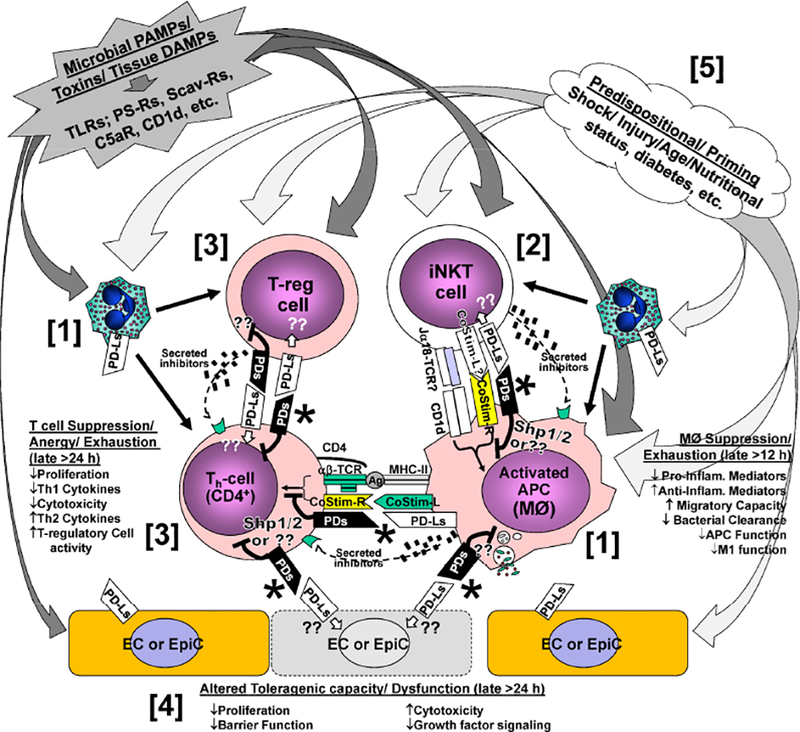Figure 4.

Hypothetical points at which Programmed Cell Death Receptor (PD) family members, i.e., PD-1, BTLA and their ligands (PD-Ls, HVEM) interact to alter iNKT cell activation in response to the diverse signal(s) derived from tissue injury and infectious microbial challenge. This leads to: [1] suppression of phagocyte clearance of the septic challenge; PMN and macrophage dysfunction (via direct/indirect effects of PD-1/PD-L1 ligation [*]); [2] overzealous activation of innate immune cells via overt iNKT cell activation through CD1d-Ag stimulation; [3] immune suppression of classic CD4 Th1 cell actions via anergy/chronic stimulation by Treg cells and/or iNKT-cells; and/or [4] through the induction of altered ECs/EpiCs capacity or dysfunction (hence a link to organ injury and dysfunction). Finally, [5] factors such as prior injury/shock and subjects age, background, nutritional status, prior health, etc., may serve to alter PD-family member expression, contributing to a state of priming/ pre-disposition/ innate immune memory.
